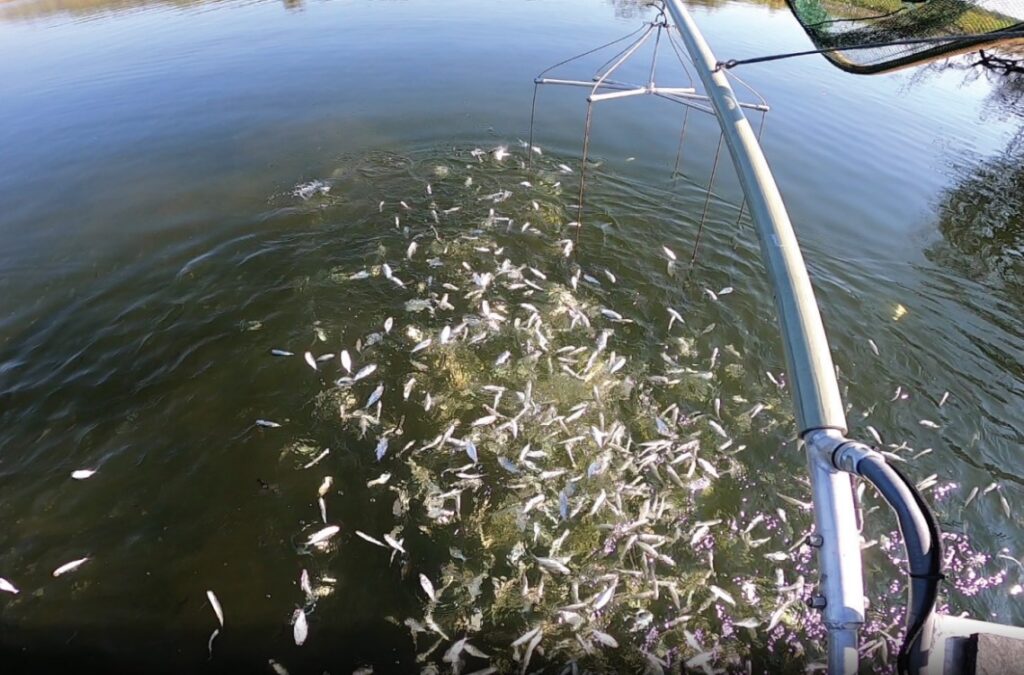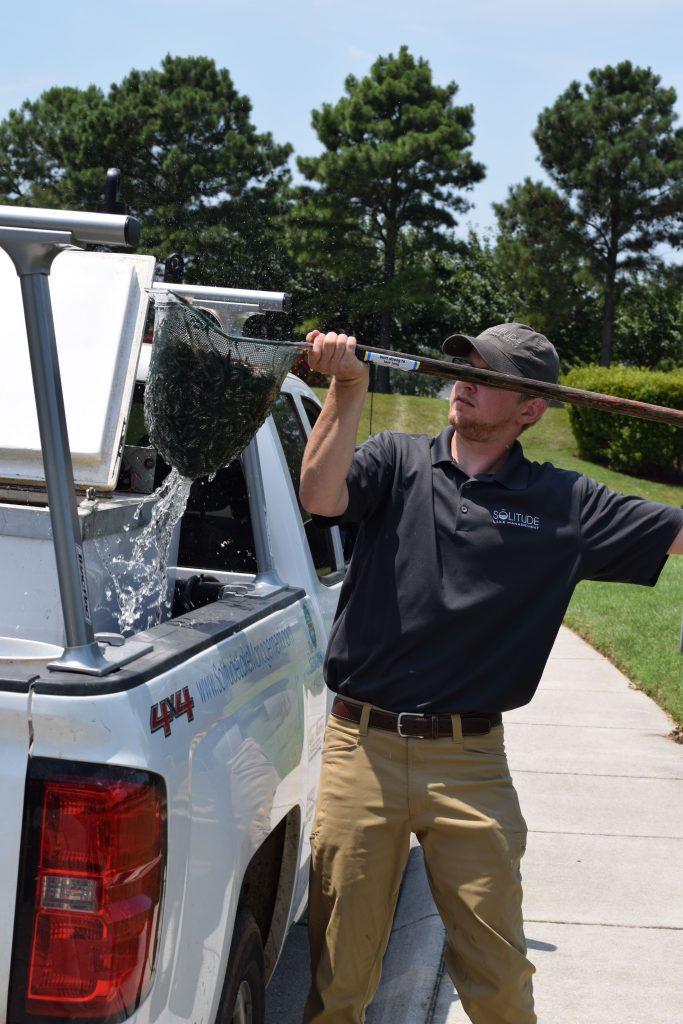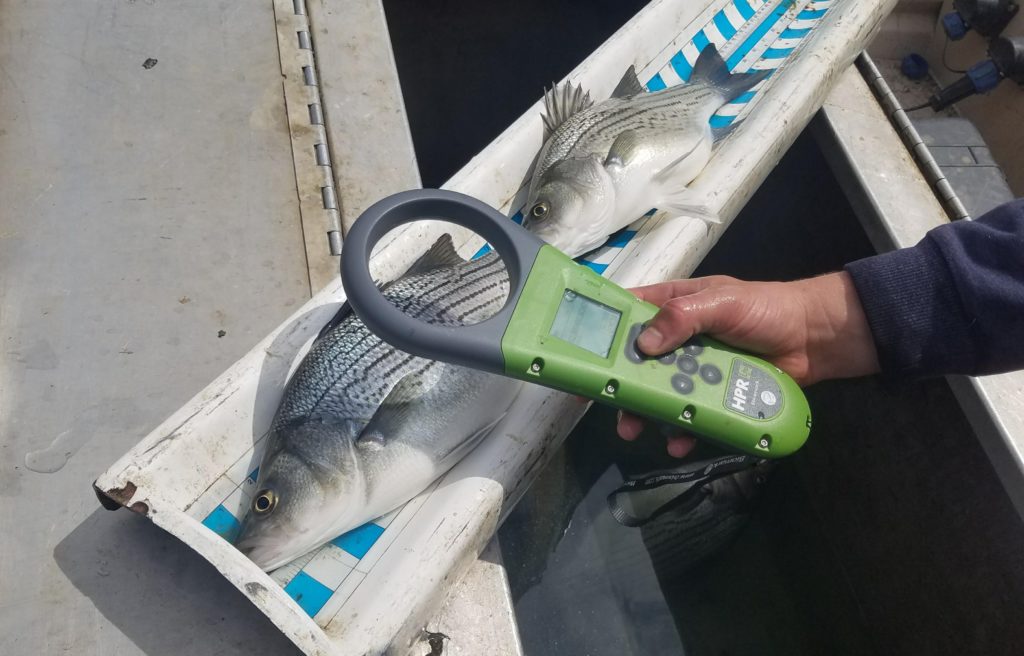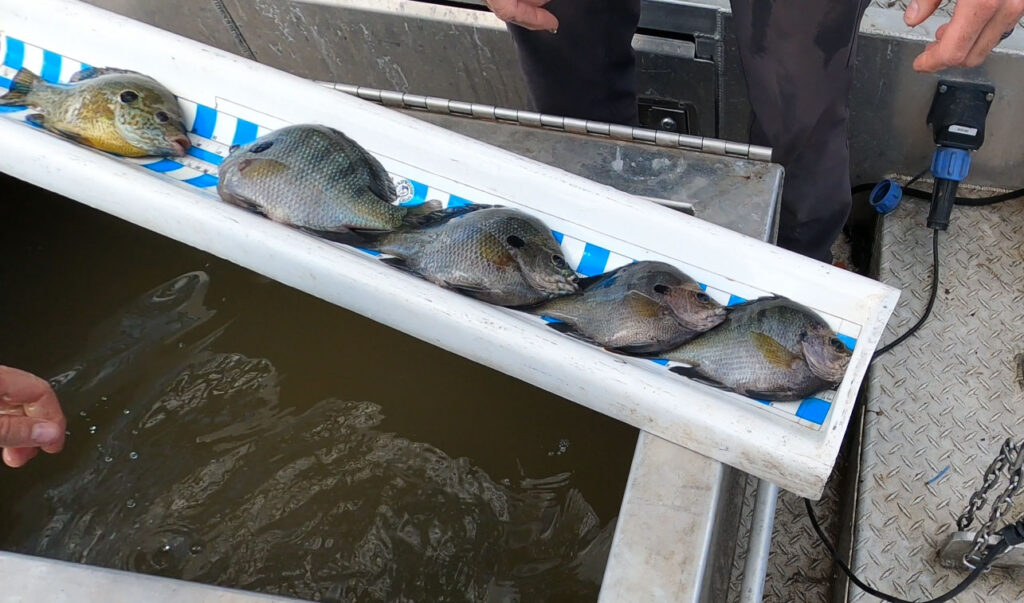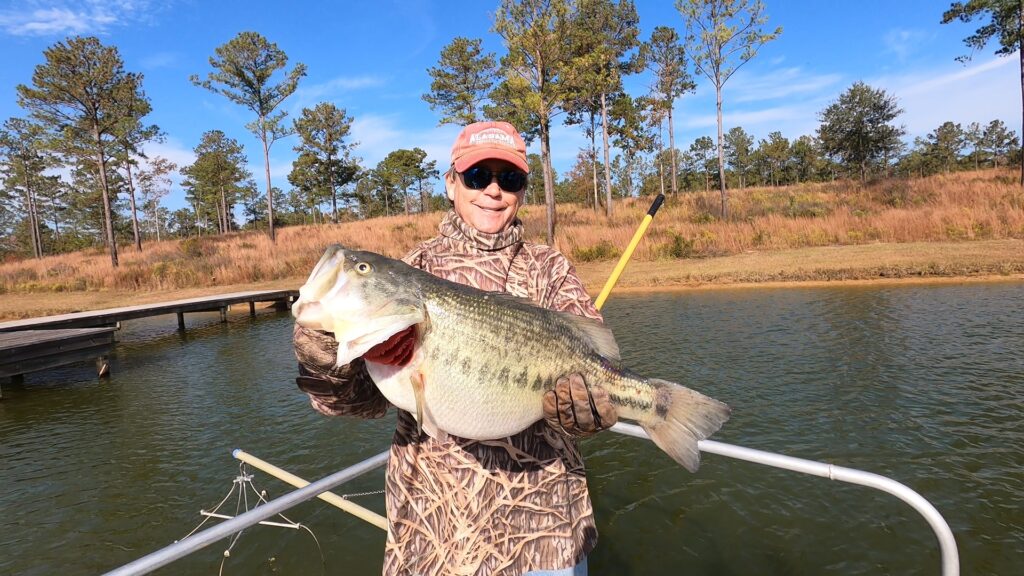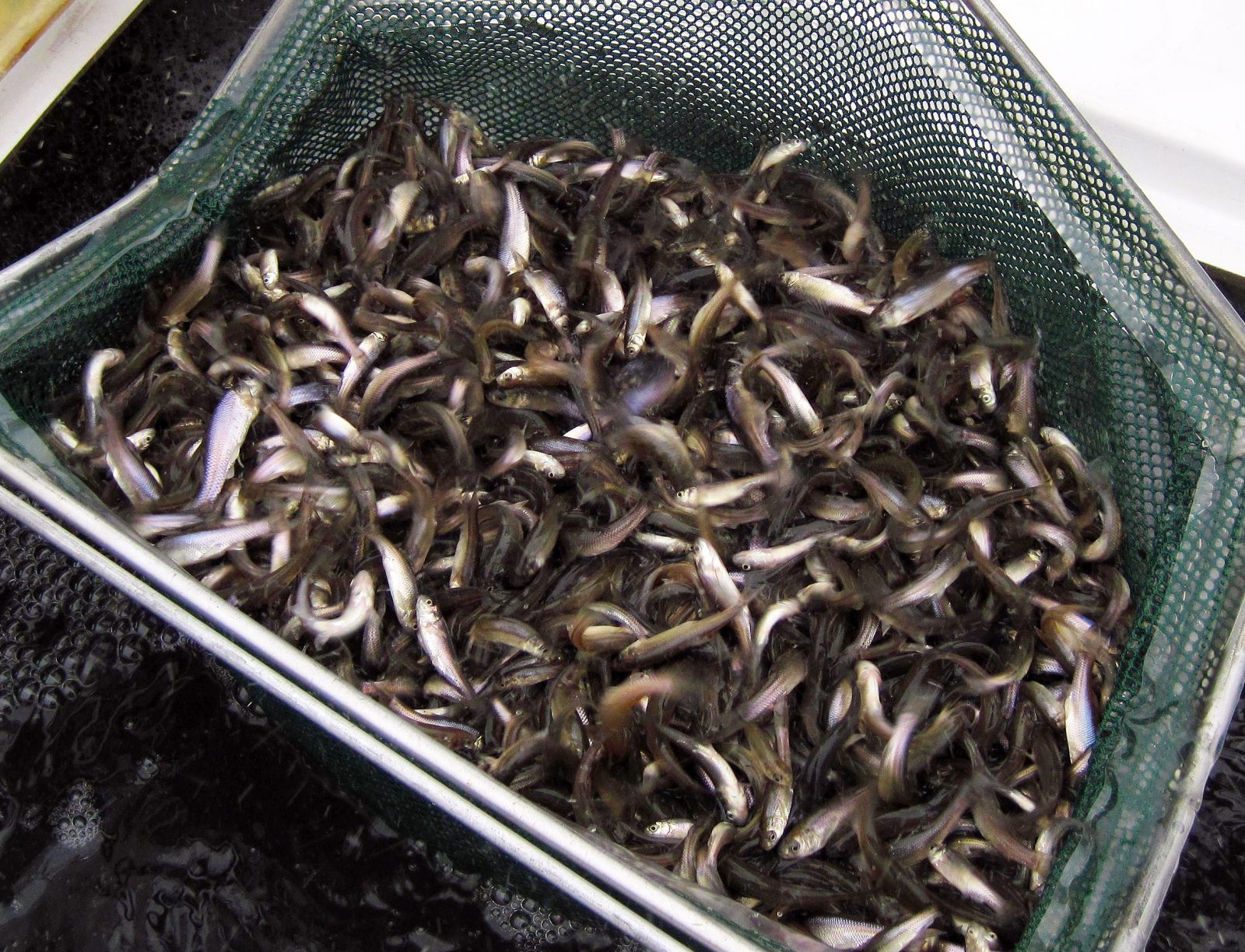
Fisheries Management: Establishing A Thriving Forage Base
Maximizing the odds of landing trophy Largemouth bass is a common desire among anglers. Throughout their journey of learning how to improve catch rates, they figure out what forage species are dominant within each particular fishery, as well as the behaviors and tendencies of those forage fish. Honing in on these details brings a level of strategy and excitement to the sport, fueling the angler’s passion. Match the hatch, if you will.
Robust forage fish populations that can make bass fishing so exciting also play a significant role in fueling growth of trophy bass. Maintaining a thriving forage population over multiple years is often incredibly challenging, requiring a great deal of hard work and an intimate understanding of the waterbody. As a result, trophy Largemouth Bass fisheries are rare, as well as temporary. Heavy on the word, “temporary”.
Assessing Your Fishery Through Electrofishing
Oftentimes, managers and biologists do not know how many pounds of forage exist in a waterbody at a given moment, but they can make reasonable estimates depending if the forage base is thriving, or if it has room for improvement. When electrofishing a thriving forage base, water can become so thick with forage fish you get the sense that you can walk on water across all those silver flashes.
This maximum density of forage is not something sustained throughout the entire year, but rather something that booms and busts on an annual…and seasonal…basis. Think of it like a pendulum swinging back and forth between a forage population growing exponentially, exceeding predation rates by a mile, followed by a period when predators consume baitfish significantly faster than the forage base can sustain. Fish don’t spawn all day every day. That process is seasonal.
This pendulum swinging back and forth aligns with the seasonal cycle of water temperatures fluctuating between warmer and cooler conditions teamed with the amount of sunlight fluctuating between longer days in the summer and shorter days in the winter.
When do forage fish reproduce?
Each forage fish species is different, but in general, warm-water forage species reproduce when water temperatures exceed 65 degrees and continue through the spring, summer, and fall. During this time, the rest of the food web is also able to fire on all cylinders if managed properly, providing an all-you-can-eat buffet of forage fish that lasts throughout the growing season.
Depending on the geographical location of the waterbody, this period of productivity typically lasts between 5 and 9 months, although in some places like southern Florida, it can last nearly year-round. What does this mean to you?
Your fish spawn, and if given the chance, they grow. When they grow, they add mass. Mass equals more nutrition. “Chance”, you might ask? Good habitat, solid food chain for those baby fish, a balance of predators…and you can grow mass.
Maximizing the forage population’s rapid expansion during the growing season should be one of the highest priorities for managers, since every year during the cool season, predation rates greatly outpace forage production. This leads to a large reduction in the forage population, especially this time of year when temperatures for growth are in the perfect range.
These events occur in the fall when the hours of sunlight start reducing significantly and water temperatures cool. As the water cools, the food web which feeds these forage fish moves at a slower pace, the forage species grow slower, and those bait fish no longer reproduce…except bluegills in the south.
In short, one of the most important objectives when managing trophy Largemouth bass is to produce a surplus of forage during the growing season, which allows that population to carry through winter with enough momentum to withstand predation and still have a large enough population to expand at an exponential rate once water temperatures warm up again next spring.
Collect Data to Make Smart Management Decisions
A sound management strategy, hard work, and discipline are necessary to achieve this…as is timing. The path to success and overall potential of the fishery will look different depending on geographic location, the waterbody’s characteristics, goals, budget, and local regulation. Taking a data-driven approach is the best way to achieve success. With the right data, decisions can be made regarding what forage species will provide the best opportunity for the bass fishery to succeed.
Data? If that doesn’t ring your bell, call your biologist and ask what to do. To an extent, the more productive the waterbody, the greater the biomass of forage the waterbody can support, resulting in each individual fishery producing varying levels of forage fish. Therefore, the predator fish population needs to be sized accordingly to ensure they do not continually overwhelm the forage population throughout the year. Think “culling”.
Determining and maintaining the proper number of predators is typically one of the most challenging management tasks. As a result, overpopulated predator fish populations are the reason most fisheries fail to produce trophy bass. That last sentence may be the most important one of this story.
To help combat the issue of forage becoming depleted, it is common to implement strategies that require annual stocking of fish species like Threadfin Shad, Tilapia, Bluegill, or Golden Shiners. Layering in supplemental stocking annually allows managers to improve the odds of achieving a forage base that grows exponentially each year, thus significantly improving the odds of success.
Diversifying the food chain, understanding how to fill open niches, and managing your predators gives the lake a chance to hedge its bets and grow some truly large fish.
Determine the Size of Your Forage Population with Electrofishing
It’s normal to assess forage fish species by making observations from a boat or while walking along the edge of the waterbody, but the best way to understand their size distribution and biomass is to electrofish the waterbody multiple times per year. Based on the data collected, forage fish can be stocked or slot fish harvested as necessary to keep populations abundant and balanced and ensure your forage fish meet the preferred edible size range desired by each size class of Largemouth bass. Forage that is too big or too small will have a negative impact on bass growth…as a population. Data collected when electrofishing is critical to the success of the fishery. Therefore, a decent percentage of effort needs to be focused proactively on the variables that lead to the recruitment, growth, and mortality of the forage base.
This is best done by making routine observations, as well as collecting data throughout the year to ensure water quality, plankton, fish feed, vegetation, algae, cover, predator populations, and those important parameters are all in line with management objectives. Water quality, in particular, is incredibly important, and oftentimes one that is least understood as well as most overlooked. Great water quality provides the opportunity for the forage base to thrive. It impacts things such as growth rates for forage fish, appetite of forage fish, and how well they reproduce.
Management steps should be taken annually to both monitor water quality as well as improve it. Plankton bloom management is another proactive management component that requires ongoing attention. Maintaining sufficient densities of plankton species that work their way up the food chain, while discouraging those that do not (think blue-green algae) can be a great deal of work, but vital to sustained success. This can include a variety of techniques such as daily or weekly monitoring of the bloom, fertilizing with phosphorus or with nitrogen, adding micro nutrients, seeding plankton populations, mitigating phosphorus, mixing the water using aeration and treating undesired algae species. Sounds easy, but it’s not. But it’s worth it to manage for the consequences.
If taking a reactive approach to managing the forage base, or cutting corners on data collection, you will eventually learn the hard way that the forage base did not expand at an exponential rate. When the forage base fails to expand rapidly, the bass population’s relentless feeding behaviors stack up against the forage population, putting the forage in a very difficult position.
They get eaten faster than they can produce. This chain of events makes it nearly impossible for their population to recover back to a thriving state without stocking a significant amount of forage fish or harvesting a large number of predator fish. When this occurs, bass growth rates are negatively impacted, resulting in lower top-end growth potential for the bass. These issues can have a profound impact on bigger bass, in particular, because they prefer eating large bait, which can take 2-3 years to establish. When the forage base fails, it can sometimes take two more years before an ample population of bigger bait fish are available again.
Keep Your Forage Population On Track for Big Bass
When looking at the challenges, it is not just the bass that feed on the abundance of forage fish. The old saying “If you build it, they will come” relates well to thriving forage fish populations. Birds, mammals, amphibians, reptiles, insects, and fish all gravitate to the waterbody as the forage base flourishes. As a result, forage populations are continually under pressure. Maximizing the growth potential of bass requires limiting the amount of forage fish consumed by all non–bass species. This is a never-ending management task, and as result, only a small number of waterbodies that are intended to become sustainable trophy fisheries achieve the status. Simply put, maintaining a thriving forage base can be hard.
Need Help With Your Fishery? Contact Us
Call us at 888-480-5253 or complete the form below to connect with a fisheries management expert.
SOLitude Lake Management is a nationwide environmental firm committed to providing sustainable solutions that improve water quality, enhance beauty and preserve natural resources.
SOLitude’s team of aquatic scientists specializes in the development and execution of customized lake, stormwater pond, wetland and fisheries management programs. Services include water quality testing and restoration, algae and aquatic weed control, installation and maintenance of fountains and aeration systems, shoreline erosion control, muck and sediment removal and invasive species management. SOLitude partners with homeowners associations, golf courses, private landowners, businesses and municipalities. SOLitude Lake Management is part of Rentokil, a leading business services company, operating across the United States, Canada and Puerto Rico.
For more information, visit SOLitude Lake Management at solitudelakemanagement.com, and connect on Facebook, LinkedIn and Twitter.








